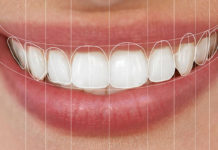
Morning huddles have been a daily part of many dental practices for a long time. But over time, huddles may seem like a nuisance. After the challenges of the past year and a half, it’s more important than ever to have a plan and make the most of every day. Now is a great time to re-energize your practice’s morning huddles.
Morning huddles set the tone for the day and ensure the team is working together towards the same goals. From a clinical aspect, huddles ensure the clinical team has the supplies needed for everything to run like clockwork. From a practical aspect, huddles prepare team members for what is expected (new or recall and recare patients) and what is unexpected but inevitable (emergency and unplanned procedures).
Like a sports team that huddles before a game, this brief meeting makes certain that every “player” is on point and knows exactly what to do at the sound of the whistle.
Like a sports team that huddles before a game, this brief meeting makes certain that every “player” is on point and knows exactly what to do at the sound of the whistle, including the handling of the occasional curveballs that may be thrown. Everybody is ready for the game—curveballs and all.
How to Huddle
Because patients and treatments vary each day, morning huddles will vary in content, but not in structure. All huddle meetings should be brief—ideally no more than 20 minutes—and take place before the office is open to patients. They should be run by the scheduling coordinator (NOT the dentist), and all team members should attend—including the doctor. During the meeting, everyone should have a view of the schedule—either on a screen or as a printout. The meeting should be focused, sharp, and organized.
Huddle Agendas: What to Do
An agenda keeps the huddle on task. Good huddles include 7 agenda items to squeeze into a 20-minute meeting. That is not a mistake! Each agenda item should only last about 3 minutes. It can be done!
Good huddles include 7 agenda items to squeeze into a 20-minute meeting. That is not a mistake! Each agenda item should only last about 3 minutes. It can be done!
1. View the Schedule Together.
- Is there anything on the schedule that seems like it will take longer than anticipated?
- Are we on track for today’s goals? Identify and define the goals for production so everyone knows them. Remind everyone of the daily goals.
- Are the finances collected for the day? The goal is met only if the team collects payment for the service, not just because the service was completed. For any treatment that is rendered, the money should be collected prior to the scheduled service or on the day of service.
2. Select TWO Appointment Times for Emergency Patients.
The dental assistants should select times for emergencies because they are the “traffic controllers” for the practice. In general, it’s best to have one appointment in the morning and one in the afternoon. If the office doesn’t have emergencies that day, the time can be used for a quick consult, etc.
3. Identify Any Undone Treatment for the Day.
Make a note of patients who need treatment that has yet to be completed. This is what I call the “possibilities and opportunities” for your office. Possibilities and opportunities could include identifying old fillings and crowns that should be replaced, making a note of yellowing teeth that could benefit from bleaching, or communicating that a patient is complaining about snoring and might benefit from a sleep appliance.
Make a note of patients who need treatment that has yet to be completed. This is what I call the “possibilities and opportunities” for your office.
In order to identify “undone treatment” during the huddle, the hygienist should review the patients in recall and the assistant should look at the notes on patients who are scheduled for treatment. Then that team member can call out any undone dentistry, which will have been noted from the patient’s last office visit. Remind team members what is needed to return each patient back to full dental health.
5. Include a Story about a Scheduled Patient.
A personal anecdote will inspire excellent customer service. Think about how your team helped a patient who is coming in or say something good about a patient for the whole team to enjoy. Is today a long-time patient’s birthday, anniversary, or graduation? Or any other important life events? Make sure to let the other team members know.
6. Share a Highlight From the Previous Day.
Positive stories humanize the patients and make the job meaningful. Sometimes patients think of team members too. One time, I was visiting an office and a patient visited for an appointment and gave everyone on the team a “stress ball.” She and her husband made stress balls and they brought them to the dental practice as a token of appreciation. It was a thoughtful and simple gesture that made everyone feel good. The story can be as short and simple as that.
7. Share a Positive Thought.
Morning huddles are a great time to share a positive thought for the day. Positive thoughts help people have a good mental attitude and can set the tone for the day. Team members should take turns sharing a daily uplifting thought—including the doctor.
If you do morning huddles effectively each day, you’ll see the magic happen. One important note about huddles is not to let them turn into a “griping session.” Save complaints for the weekly or monthly meetings so the huddles can stay on track. The goal for every dental team is to provide dentistry that changes lives. A good morning huddle reinforces and builds good relationships with patients, so they feel comfortable and confident with your treatment. When teams build relationships correctly, they develop a practice that genuinely cares about individuals, rather than just performing dental treatments. It’s a win for everybody.








